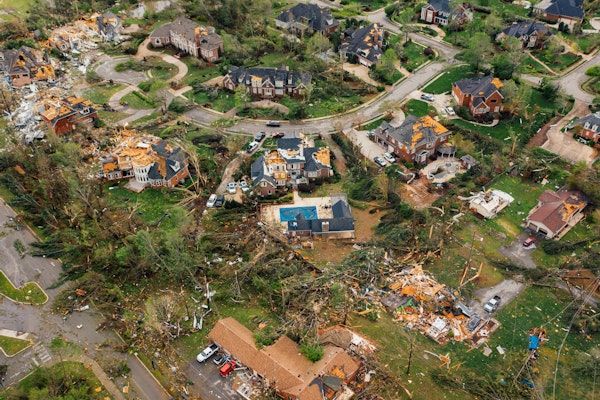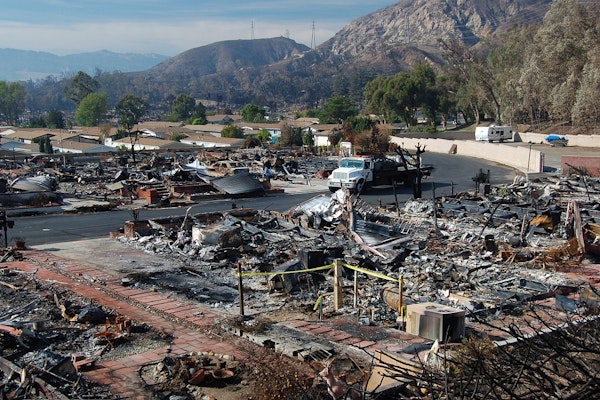
North Carolina Resident Charged with 54 Felonies in $1.8 Million Travel Insurance Fraud Case
A North Carolina resident allegedly forged medical and travel documents to defraud insurers of nearly $1 million and attempted to steal close to another $900K between 2020 and 2024.
August 18
Fraud
Insurance Industry
Litigation
Property
North Carolina

Hurricane Erin Threatens East Coast with Life-Threatening Surf and Evacuations Ordered in North Carolina
Hurricane Erin, now a powerful Category 4 storm, is forecast to bring dangerous surf and rip currents to the eastern U.S., prompting mandatory evacuations in coastal North Carolina.
August 18
Catastrophe
Insurance Industry
Property
Risk Management
Florida
North Carolina

Delivery Drones Are Expanding Rapidly as Safety, Cost, and Regulatory Challenges Persist
As FAA regulations evolve, drone delivery is scaling to more U.S. cities, though high costs, airspace safety, and privacy concerns continue to slow full adoption.
August 14
Legislation & Regulation
Property
Risk Management
Technology
Arizona
Florida
Georgia
Kansas
Missouri

Record-Breaking Insured Losses in 2025 Highlight Growing Impact of U.S. Wildfires and Storms
The first half of 2025 brought $84 billion in insured catastrophe losses, driven by U.S. wildfires and severe convective storms, making it the costliest H1 since 2011.
August 14
Catastrophe
Insurance Industry
Property
Risk Management
California
Florida
New Jersey
New York
North Carolina

Storm Surge Risk Threatens Billions in Coastal Property Value Across 20 States
Over 6.4 million homes in coastal U.S. states face moderate or greater storm surge risk, with $2.2 trillion in potential reconstruction costs, according to 2025 Cotality data.
June 2
Catastrophe
Legislation & Regulation
Property
Risk Management
Alabama
Connecticut
Delaware
District Of Columbia
Florida

Millions of Homes Unprotected as Climate-Driven Insurance Costs Soar
New research shows insurance protects against climate disasters, but millions of flood-prone homes remain uninsured as premiums climb beyond affordability.
May 20
Catastrophe
Legislation & Regulation
Property
Risk Management
California
Florida
Kentucky
Louisiana
New York

EPA Plans to Weaken Drinking Water Limits on Emerging PFAS Chemicals
The EPA will maintain strict limits for two common ‘forever chemicals’ but plans to roll back standards for others, citing legal challenges and utility concerns.
May 19
Catastrophe
Legislation & Regulation
Property
Risk Management
New York
North Carolina

Georgia Fraud Investigation Results in Over 180 Felony Charges Against Eight Individuals
Authorities in Chatham County charged eight people with over 180 felonies after they allegedly used an elderly victim’s personal information to commit identity theft and insurance fraud.
April 28
Fraud
Insurance Industry
Litigation
Risk Management
North Carolina

Where Home Insurance Still Costs Under $1,200 a Year
As extreme weather drives up insurance rates nationwide, a few Midwestern states still offer annual home insurance premiums under $1,200 thanks to lower risk and better mitigation.
April 8
Catastrophe
Insurance Industry
Property
Risk Management
Florida
Indiana
Louisiana
North Carolina
Ohio

AI Analysis Reveals $2.15 Trillion in US Property at Risk from Wildfires
A new AI-driven study by ZestyAI finds that $2.15 trillion worth of U.S. residential property is at high risk of wildfire damage, affecting millions of homes beyond historically fire-prone regions.
February 27
Catastrophe
Insurance Industry
Property
Underwriting
California
Colorado
Kentucky
North Carolina
South Dakota

Rising Insurance Costs and Severe Thunderstorms: How Convective Storms Are Reshaping Risk
Severe convective storms are a major driver of rising insurance costs, with hail, tornadoes, and strong winds causing billions in property damage. Understanding storm patterns can help insurers manage risk effectively.
February 24
Catastrophe
Insurance Industry
Property
Risk Management
Alabama
Florida
Georgia
Illinois
Indiana

South Carolina’s Liquor Liability Insurance Market Faces Deepening Crisis
South Carolina’s liquor liability insurance market has been unprofitable since 2017, with insurers losing $1.77 for every $1.00 earned. Claim frequency far exceeds neighboring states, intensifying concerns.
February 20
Insurance Industry
Legislation & Regulation
Liability
Risk Management
Florida
Georgia
North Carolina
South Carolina

Strengthening Exposure Management to Address Hidden Insurance Risks
Overlooking excluded risks in exposure management can lead to financial strain for insurers. A proactive approach helps mitigate costs from non-indemnifiable claims.
February 14
Catastrophe
Litigation
Risk Management
Technology
California
North Carolina

Charlotte Man Charged with Insurance Fraud Over False Deer Collision Claim
A Charlotte man faces a felony insurance fraud charge after allegedly misrepresenting how his vehicle was damaged, claiming a deer strike instead of a hit-and-run crash.
February 4
Auto
Fraud
Insurance Industry
Legislation & Regulation
North Carolina

Natural Disasters Caused $368 Billion in Damage Last Year, Aon Report Reveals
The 2025 Climate and Catastrophe Insight Report by Aon highlights how hurricanes, severe storms, and global flooding pushed disaster losses to $368 billion in 2024, exposing critical insurance gaps.
January 29
Catastrophe
Insurance Industry
Property
Risk Management
Florida
Georgia
North Carolina
South Carolina
Tennessee





